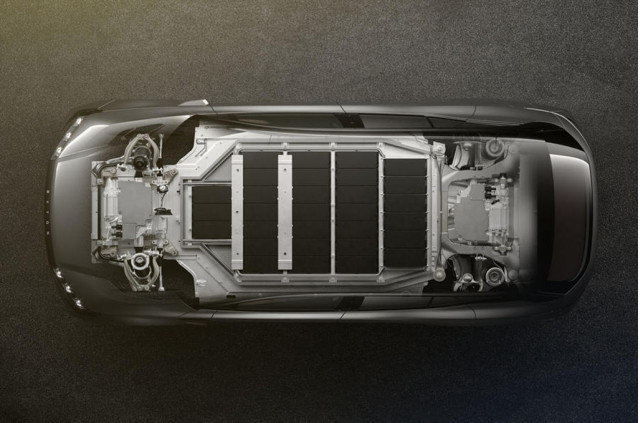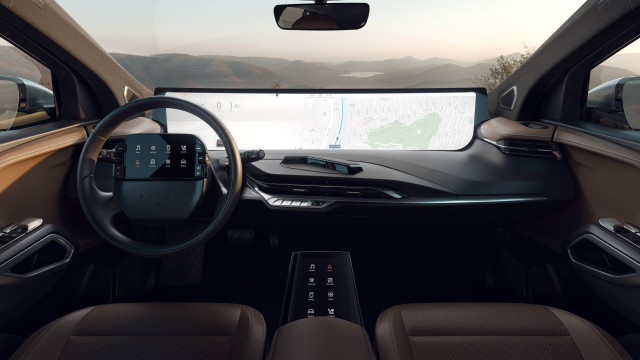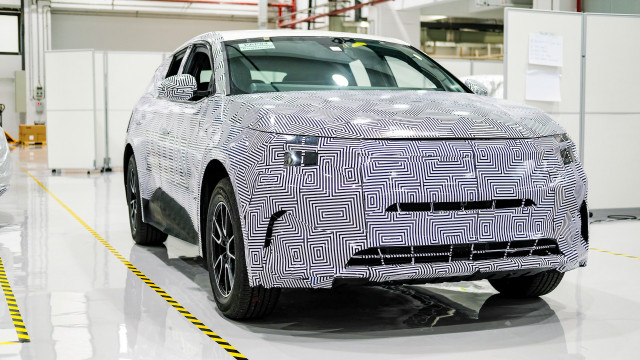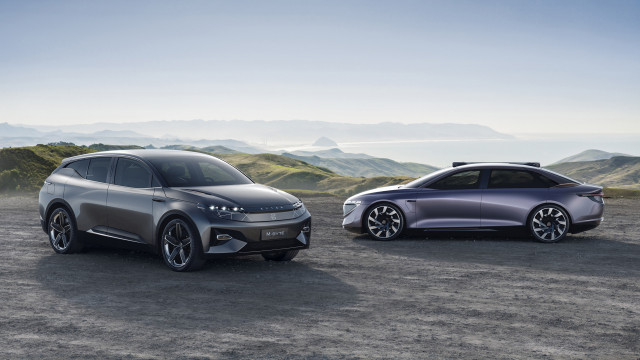Follow Bengt
Not too long ago, Byton was another longshot electric vehicle maker with some good ideas. But it’s already outlasted its early hype bubble and is looking increasingly likely to deliver what could be a very enticing combination to three continents—a large, spacious, long-range all-electric SUV with a new kind of interface, at a starting price of $45,000.
What made Byton generate buzz from the start was its announcement at CES 2018 that it was developing its own vehicle operating system, app ecosystem, and interface, banking a lot on the user experience—with “deep integration” details like health monitoring.
While its vivid 48-inch wide-screen system across the entire upper dash drew crowds, a lot of other details then were missing—but those details have gradually been released with enough detail to convince us that Byton has some compelling products in the pipeline.
In an edition of a company supported video blog called the “Byton Inside Reporter” earlier this month, CEO Daniel Kirchert walked through a prototype workshop, where he says last year the company already built 100 early-stage prototypes, built to make sure it can fulfill all the safety and durability requirements.

Byton concept, 2018 Consumer Electronics Show
There he pointed out some of the core attributes of the company’s “skateboard” platform, which will be shared by its first three vehicles and was developed from scratch, including the capability for over-the-air updates that can roll out expanded features, including safety systems and driver aids.
DON’T MISS: Byton brings its big-screen electric SUV back to CES, a step closer to reality
The platform is built around two battery packs, which are mostly carried under the passenger floor, with cells and modules supplied by CATL and capacities of 95 kwh or 72 kwh. In the M-Byte, they’ll equate to a claimed range of 317 miles or 249 miles, respectively, based on very optimistic and outdated European NEDC tests.
One of the noteworthy design points for the platform: The floor will be perfectly flat, and Kirchert points out that the entire air conditioning system has been moved ahead of the cabin—so it won’t take up passenger space.
Kirchert also pointed to the cost-conscious combination of high strength steel and aluminum parts, balanced with the importance of keeping weight down.

Byton M-Byte production interior
Also of note is Byton’s own internal design that allows the steering-wheel touch screen to stay isolated and upright while the driver steers. In seeing the platform laid out like this, we can see how low the cowl and beltlines are relative to the floor—a hint that the production vehicle is going to offer some good outward visibility and sight-lines, even though side pillars from early versions have been thick.
CHECK OUT: Byton reveals self-driving living-room on wheels, the K-Byte, in LA
Kirchert says that the prototypes have already completed the rigors of durability testing, including winter testing in Inner Mongolia, and they’re now doing heat testing. Further, he emphasized quality and safety targets. “I think we use the best of the premium car industry know-how and mindset to make a good-quality car and a safe car—and this has to be done,” he said.
In what sounded like a jab at Tesla, which reportedly went from prototypes to final production in shockingly short order for Model 3, Kirchert added: “These prototypes, the real prototypes, the pre-production trial lot, and the final production; every step is very important.”

Byton M-Byte electric SUV prototype
The next step will be to finish its Nanjing, China, assembly plant, and in two months (July) it will have the first prototypes (and then validation prototypes) coming off the real series-production tools and line.
Byton’s stamping shop can complete a body panel every three seconds and will be one of the fastest such facilities in China, according to the trade publication Robotics & Automation News. And the welding shop, with 335 welding robots from partner Kuka, is 99-percent automated.
The M-Byte will be revealed in production form in July, and will then release the first pricing information and open its pre-order systems. It aims to ramp up series production in the third quarter of this year, and deliveries in China by the end of the year. The K-Byte sedan will follow, and a third model, yet to be teased, is in the development pipeline.
READ MORE: How Byton is developing three electric vehicles at once
When we sat down with chief engineer David Twohig in January—since promoted to chief technical officer—he walked us through some other key details: that the M-Byte will “be a ride car” prioritizing comfort, and that it will be offered in single-motor (rear-wheel drive) or dual-motor (all-wheel drive) versions. Twohig also confirmed that it will use CCS (Combo) DC fast charging, which we anticipate will work at 150 kw or even a little more.

Byton M-Byte and K-Byte concepts
Byton has held many of its financial details close, but in an indication of being smart with limited funds, besides developing one platform for three vehicles from the start it’s turning to Bosch for the vehicles’ power systems and motors. Kirchert reiterated that it plans on an entry price for the M-Byte of roughly $45,000—although options could add a significant amount to that.
As a multi-national effort, including R&D (software and self-driving) offices in California and a design center in Munich, Byton hasn’t adjusted its U.S. plans, or its timeline in light of U.S. tariff tensions. “From the beginning we had this vision to make it a global brand and be firmly committed to this,” summed Kirchert, in a previous video, underscoring that the brand’s on-sale timeline remains in place as late this year for China, mid-2020 for North America, and late 2020 for Europe.
Byton certainly isn’t the first startup EV maker with Chinese connections. But if it can pull off those delivery dates, this brand might actually be the first one to reach the finish line—in U.S. driveways.